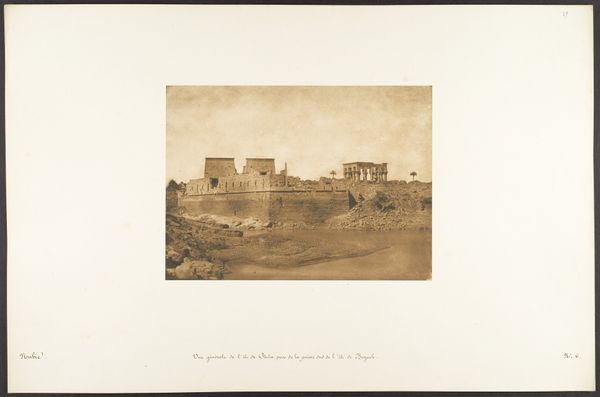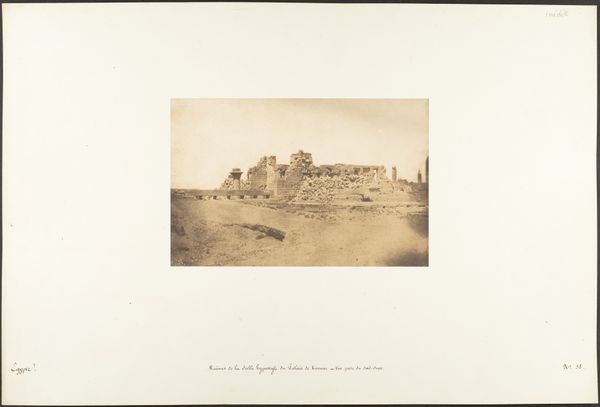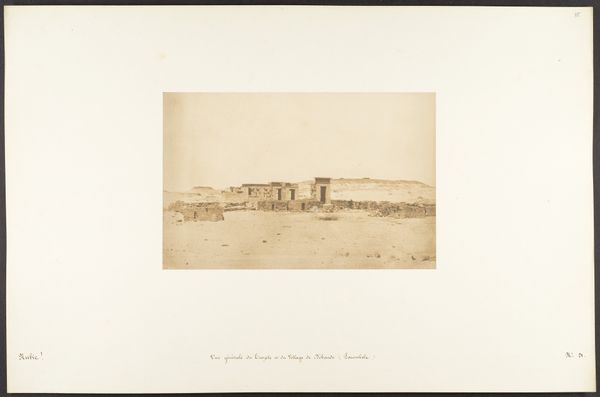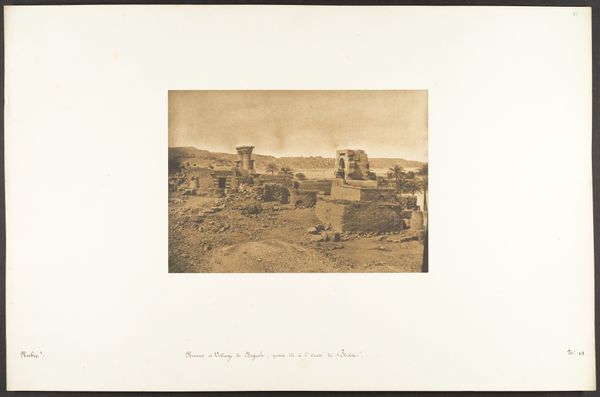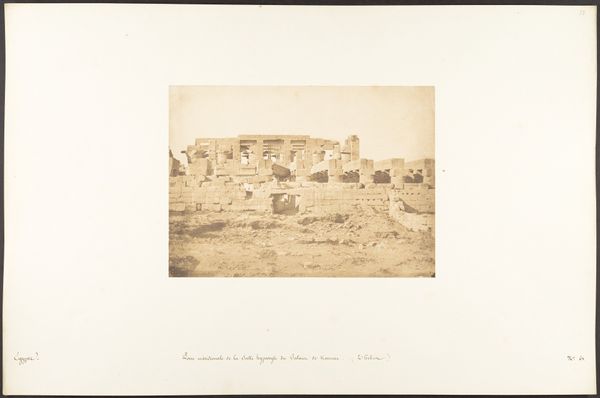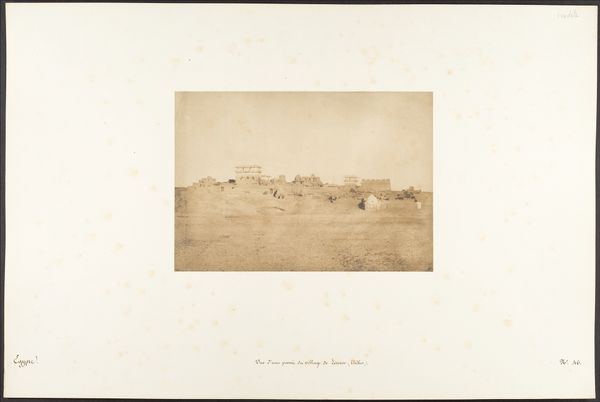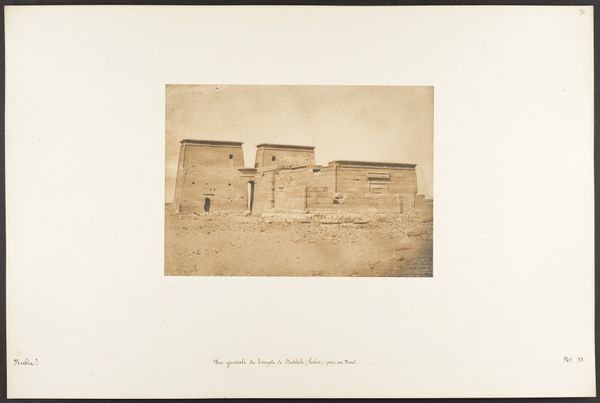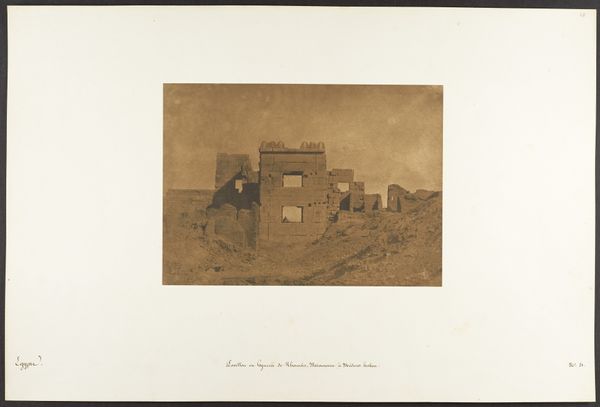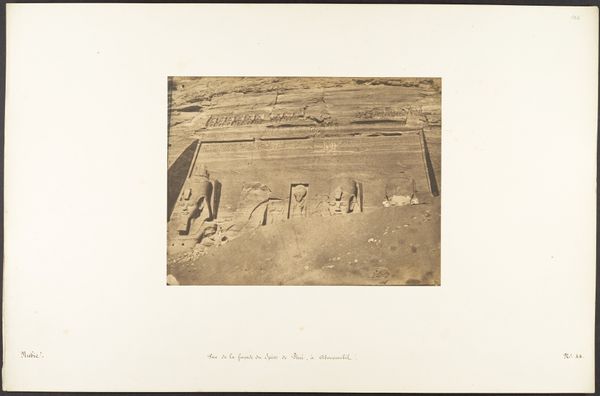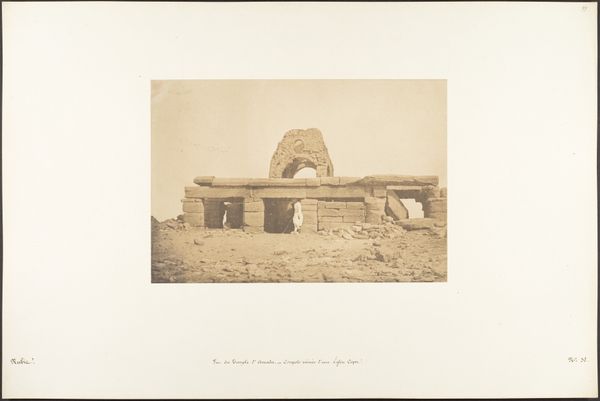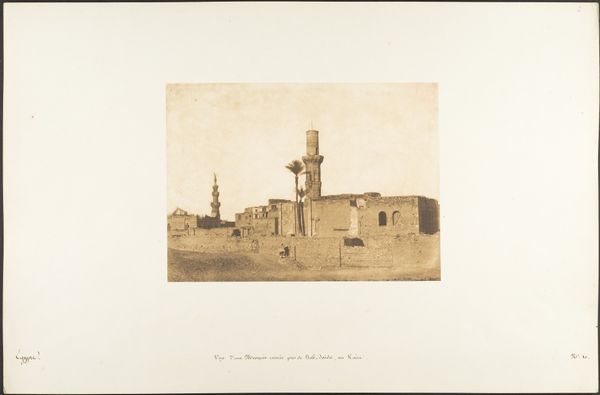
photography, gelatin-silver-print, architecture
#
landscape
#
photography
#
ancient-mediterranean
#
gelatin-silver-print
#
architecture
Dimensions: Mount: Approximately 32 x 47 cm (12 5/8 x 18 1/2 in.)
Copyright: Public Domain
Curator: Standing before us is Maxime Du Camp's "Ruines du Temple d'Herment (Hermentis)", a gelatin-silver print from around 1849 to 1850. Editor: My immediate impression is one of melancholic grandeur. It feels desolate, yet the scale hinted at by the remaining columns is awe-inspiring. Curator: Absolutely. Du Camp, working alongside Gustave Flaubert, captured these ruins in Egypt, not just as a record, but as a commentary on time and empire. It raises so many questions about what it means to make images of ruined spaces, as both cultural heritage sites, and spaces of lived historical memory. Editor: Precisely. The desaturated tones and almost symmetrical composition evoke a sense of loss and abandonment. These spaces are heavy with layers of meaning about race, gender, and class as power constructs. They stand here silent witness to power, but they also become newly invigorated as a space of potential reinterpretation, no? Curator: Exactly. One almost senses a ghostliness here, perhaps reflecting on all the peoples displaced across centuries. It is fascinating that this image, rendered through what was then a novel medium, speaks of civilizations long past, a technology attempting to arrest something in history, to both capture and re-imagine, or re-contextualize, what once was. Editor: Right, and it's not just a neutral record. The very act of selecting this vantage point, framing the decay, contributes to a specific narrative. The image is implicated within broader movements and moments that focus on how these structures came to fall in disrepair. To whose hands were the bricks given? Why did things collapse and what can they tell us about the contemporary ruin of things, institutions, people? The way the photographer captures the textures is amazing! Curator: Absolutely, and Du Camp does it in a way that’s incredibly resonant, still today. I feel, after all this, drawn again to think through what he means to capture and whether this rendering succeeds. Editor: Indeed. Considering the passage of time since this was taken adds another layer of complexity to understanding how visual language and photography become entangled. These images speak across and through time, offering important, and fraught insights into both then and now.
Comments
No comments
Be the first to comment and join the conversation on the ultimate creative platform.
